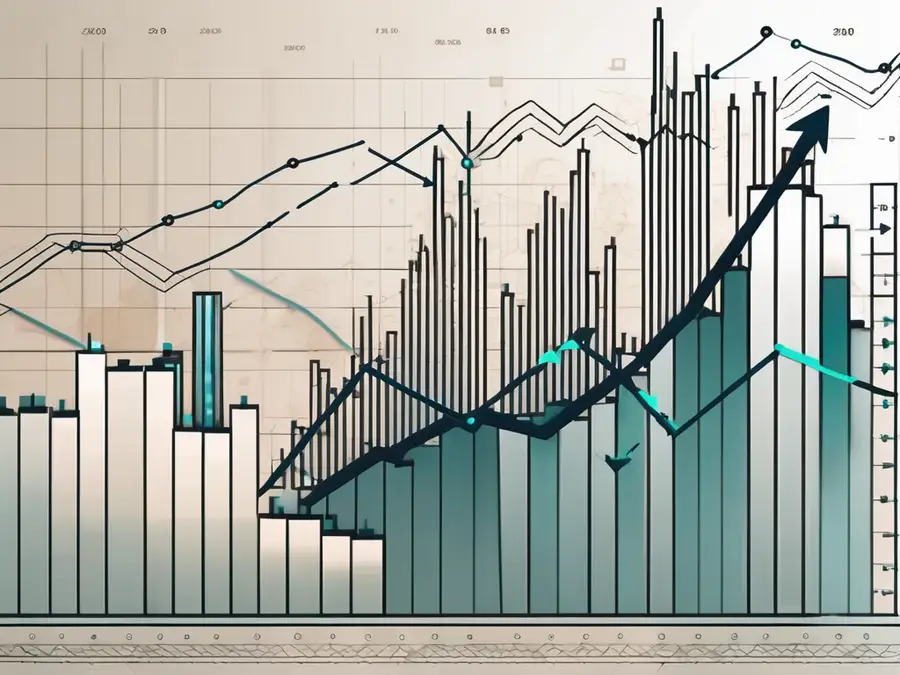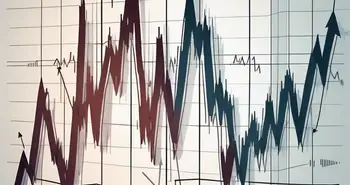What is Trend Trading?

Trend trading is a powerful strategy for taking advantage of market trends and making profitable trades. Whether you are a seasoned trader or just starting out, understanding the basics of trend trading is essential to your success. In this ultimate guide, we will dive deep into the world of trend trading and discover the strategies, techniques, and tools that can help you become a successful trend trader.
Understanding the Basics of Trend Trading
Before diving into the specifics, it's important to first understand what trend trading is all about. At its core, trend trading is a strategy that involves identifying and trading in the direction of the prevailing market trend. The goal is to ride these trends and profit from the price movements that occur.
Trend trading is based on the belief that markets tend to move in a particular direction for a sustained period of time. By identifying these trends early on, trend traders can position themselves to take advantage of potential gains.
What is Trend Trading?
Trend trading is a trading style that focuses on capturing gains in a market by following an established trend. Traders who employ this strategy believe that when a stock is trending, it has a greater probability of continuing in its current direction than of reversing. This allows them to enter the market and ride the trend for maximum profit.
When it comes to trend trading, timing is crucial. Traders aim to enter a trade as early as possible, when the trend is just beginning to form, and exit before it reverses. This requires careful analysis of price charts, technical indicators, and market sentiment.
The Importance of Trend Trading in the Financial Market
Trend trading plays a crucial role in the financial market. It helps traders identify and capitalize on potential opportunities for profit. By following the overall market direction, trend traders can minimize their exposure to market fluctuations and increase their chances of success.
One of the key advantages of trend trading is its ability to generate consistent profits over time. By aligning your trades with the prevailing trend, you increase the probability of being on the right side of the market and maximizing your returns.
Furthermore, trend trading can be applied to various financial instruments, including stocks, commodities, and currencies. This versatility allows traders to diversify their portfolios and take advantage of trends in different markets.
Key Principles of Trend Trading
Successful trend trading is built upon a set of key principles that guide traders in their decision-making process. These principles include:
- Identifying the trend: The first step in trend trading is identifying the direction of the trend. This can be done using technical analysis tools such as moving averages, trend lines, and oscillators.
- Confirming the trend: Once the trend has been identified, it's important to confirm its strength before entering a trade. This can be done by analyzing volume, momentum indicators, and other technical indicators.
- Managing risk: Risk management is crucial in trend trading. Traders should use stop-loss orders to limit potential losses and protect their capital. Additionally, position sizing and diversification can help spread risk.
- Staying disciplined: Following a trend requires discipline. Trend traders should have a clear set of rules and stick to them, even when faced with market fluctuations or emotional biases.
By adhering to these principles, trend traders can increase their chances of success and navigate the ever-changing financial markets with confidence.
In conclusion, trend trading is a powerful strategy that allows traders to profit from the prevailing market trends. By understanding the basics of trend trading, its importance in the financial market, and the key principles that guide successful trend trading, traders can enhance their trading skills and potentially achieve consistent profits over time.
Types of Trend Trading Strategies
Now that we understand the basics of trend trading, let's explore some popular trend trading strategies:
Swing Trading
Swing trading is a strategy that aims to capture short to medium-term price movements within an overall trend. Traders look for swings or price reversals and enter trades based on these opportunities.
Position Trading
Position trading is a long-term trend trading strategy that aims to ride major market trends over weeks, months, or even years. Traders focus on fundamental analysis and larger timeframes to identify and trade these long-term trends.
Momentum Trading
Momentum trading focuses on stocks or assets that are exhibiting strong upward or downward price movements. Traders look for stocks with high momentum and aim to profit from these price trends.
Breakout Trading
Breakout trading involves identifying and trading the breakouts of key price levels or chart patterns. This strategy aims to profit from the increased volatility and momentum that often follow a breakout.
Identifying Market Trends
Recognizing market trends is essential for trend traders. Let's explore how to identify different types of trends:
Recognizing Upward Trends
An upward trend is characterized by higher highs and higher lows. Traders can identify upward trends by using tools such as moving averages, trend lines, and by analyzing the overall price structure of a security.
Spotting Downward Trends
A downward trend is characterized by lower lows and lower highs. Traders can spot downward trends by using similar tools as in upward trends, but in the opposite direction.
Understanding Sideways Trends
Sideways trends occur when the price moves within a range or consolidates. Traders can identify sideways trends by identifying key support and resistance levels and observing price behavior within that range.
Tools and Techniques for Trend Trading
Now that we understand the different types of trend trading strategies and how to identify market trends, let's explore some tools and techniques that can enhance your trend trading success:
Technical Analysis in Trend Trading
Technical analysis is a crucial component of trend trading. It involves analyzing historical price and volume data to make informed trading decisions. Traders use various technical indicators, chart patterns, and tools to identify trends and potential entry and exit points.
Moving Averages and Trend Lines
Moving averages and trend lines are popular technical indicators used in trend trading. Moving averages smooth out price data, making it easier to identify trends. Trend lines help traders visualize the direction of a trend and can act as support or resistance levels.
Using Indicators and Oscillators
Indicators and oscillators, such as the Relative Strength Index (RSI) and the Moving Average Convergence Divergence (MACD), can provide additional insights into market trends and potential reversals. These tools help traders confirm trends and make more informed trading decisions.
Throughout my years of experience in trend trading, one piece of advice that I always follow is to never underestimate the power of a well-defined trend. It's easy to get caught up in market noise and short-term fluctuations, but by focusing on the bigger picture and trading in the direction of the prevailing trend, you can increase your chances of success.
FAQ: Frequently Asked Questions
What is trend trading?
Trend trading is a trading strategy that involves identifying and trading in the direction of the prevailing market trend. It aims to capture the gains that occur when a stock or asset is trending.
Why is trend trading important?
Trend trading is important because it allows traders to ride the momentum of market trends and increase the probability of profitable trades. It helps traders minimize their exposure to market fluctuations and maximize their chances of success.
What are the key principles of trend trading?
The key principles of trend trading include identifying the trend, confirming its strength, managing risk, and staying disciplined. These principles guide traders in their decision-making process and increase their chances of success.
What are some popular trend trading strategies?
Some popular trend trading strategies include swing trading, position trading, momentum trading, and breakout trading. These strategies cater to different trading styles and timeframes.
What tools and techniques are used in trend trading?
Trend trading utilizes various tools and techniques, such as technical analysis, moving averages, trend lines, and indicators and oscillators like RSI and MACD. These tools help traders identify trends, potential entry and exit points, and confirm the strength of a trend.
What is the importance of recognizing market trends?
Recognizing market trends is crucial for trend traders as it allows them to trade in the direction of the prevailing trend. By identifying upward, downward, or sideways trends, traders can position themselves to take advantage of potential profits.
Remember, trend trading is not a guaranteed path to success. Like any trading strategy, it requires careful analysis, risk management, and discipline. By honing your skills, staying informed about market developments, and continuously adapting your strategies, you can become a successful trend trader.
Ready to elevate your trend trading game with a cutting-edge platform? Discover Morpher, the revolutionary trading platform that's reshaping the investment landscape. With zero fees, infinite liquidity, and the ability to trade a vast array of assets, Morpher is the perfect partner for trend traders seeking to capitalize on market movements. Embrace the power of blockchain technology for a safer, more controlled trading experience, and take advantage of features like fractional investing, short selling, and up to 10x leverage. Transform your trading strategy with Morpher's unique Virtual Futures and join a global community of investors who are already enjoying the future of trading. Sign Up and Get Your Free Sign Up Bonus today, and start trading the trends like never before!

Disclaimer: All investments involve risk, and the past performance of a security, industry, sector, market, financial product, trading strategy, or individual’s trading does not guarantee future results or returns. Investors are fully responsible for any investment decisions they make. Such decisions should be based solely on an evaluation of their financial circumstances, investment objectives, risk tolerance, and liquidity needs. This post does not constitute investment advice.

Painless trading for everyone
Hundreds of markets all in one place - Apple, Bitcoin, Gold, Watches, NFTs, Sneakers and so much more.

Painless trading for everyone
Hundreds of markets all in one place - Apple, Bitcoin, Gold, Watches, NFTs, Sneakers and so much more.









